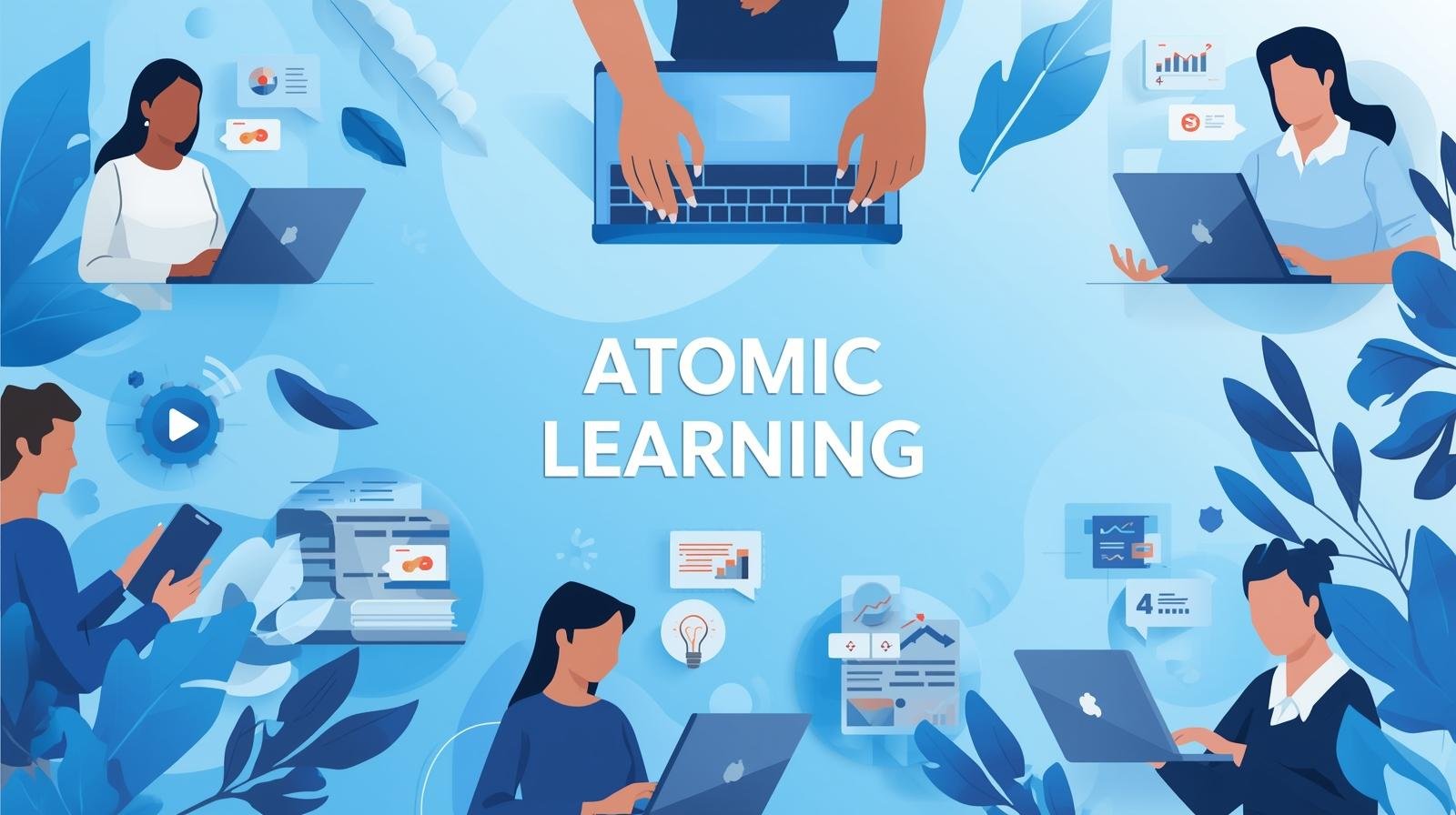As information changes quickly, old ways of learning aren’t enough to keep up with the needs of business, education, and technology. Students, professionals, and businesses all need better ways to learn quickly and put what they learn to use right away. Atomic learning is a method that has become popular in the world of digital learning. It’s not just a way to teach; it’s also a great way to make hard subjects easier to understand and make learning available to everyone.
What is Atomic Learning?
Atomic learning is a way of micro-learning that breaks down hard ideas into smaller, easier-to-understand parts. It doesn’t have long lectures or classes; instead, it focuses on giving short, structured lessons that explain one idea at a time. This method makes sure that students don’t feel overwhelmed and can easily remember what they learn.
For example, instead of going to a two-hour training session on computer software, a student can watch several short videos, each of which shows them how to use one feature or function. Not only does this save time, but it also helps people remember and understand things better.
How Atomic Learning works
Atomic learning is built around being simple and focused. Each lesson is meant to last only a few minutes and is often given as
- Step-by-step video guides
- Modules that let you practice in a hands-on way
- Short articles or guides that only talk about one idea
This method encourages people to keep learning because they can study whenever and wherever they want, at their own pace. It also fits with how short people’s attention spans are these days, when things move so quickly in the digital world.
Atomic Learning’s main benefits
There are a number of reasons why schools, colleges, and businesses are choosing atomic learning as their main way to teach and train people. Some of the most important benefits are:
Flexibility and Accessibility: Students can access lessons on many devices, which makes it easier to learn while on the go.
Better Memory: Short lessons help students remember what they’ve learned better than long ones.
Time Efficiency: Instead of spending hours on one thing, learners can focus on small parts that fit into their daily lives.
Practical Application: Because each unit is about a specific topic, learners can use what they’ve learned right away in real life.
Cost-Effective Training: Atomic learning lowers the cost of training for businesses while keeping the quality high.
Uses of Atomic Learning in Schools
Teachers and schools use atomic learning to make things like math, science, and computer studies easier to understand. They don’t give students too much information at once by breaking lessons up into smaller topics. This makes it easier for them to understand. It also helps students learn in the classroom by giving them quick reviews and extra materials.
In Business Training
Atomic learning is a good way for businesses to help their employees learn new skills. Companies often have to teach their employees how to use digital tools, follow rules, or help customers. Micro-learning modules let employees learn without stopping their work flow, so they don’t have to leave their jobs for long training sessions.
In Personal Growth
Atomic learning can help professionals move up in their careers by letting them learn new skills in small steps. This method works especially well in fields that change quickly, like technology, marketing, and healthcare.
Why Atomic Learning is Different
The best thing about atomic learning is that it can change. It doesn’t need a strict schedule or a lot of reading like other methods. Students can choose when, where, and how they learn. Structured micro-courses on digital platforms are now the best choice for people who want to be both efficient and effective.
Also, this model lets people keep learning, which is important in a world where knowledge quickly becomes useless. Instead of having to relearn everything, people can just get new micro-lessons that show them what’s new in their field.
Problems with Atomic Learning
Atomic learning works very well, but it does have some problems. Some students might like longer lessons better than shorter ones. Without discipline, people might skip important modules or not finish a set of micro-lessons. But with the right help and a well-thought-out plan, these problems can be made less serious.
The Future of Learning
Atomic learning is at the center of the shift toward more digital education. As technology gets better, more platforms will probably start using this method, which includes AI-powered personalized lessons, games, and even virtual reality experiences. This change will make learning more interesting and fit each person’s needs better.
Q: What is Atomic Learning?
A: Atomic Learning is a website that offers video lessons and other materials for learning about technology, software, and professional skills.
FAQs: Normally People Asked
1: Who can learn with Atomic Learning?
Atomic Learning is available to students, teachers, and professionals who want to improve their digital skills and knowledge.
2:Is Atomic Learning free?
Some schools let people use it for free, but most of the time you need to pay for a subscription or log in with your school account.
3: What kinds of things can you learn on Atomic Learning?
It talks about things like Microsoft Office, Google Workspace, coding, multimedia, digital literacy, and technology tools for the classroom.
4: Is it possible to use Atomic Learning on a phone or tablet?
Yes, you can access it through web browsers on smartphones, tablets, and desktop computers.
5: Does Atomic Learning give out certificates?
It can track your progress, but whether or not you get an official certification depends on the school or course setup.
6: What is the format of Atomic Learning tutorials?
Tutorials are short, step-by-step videos that show you how to do things and give you examples to make learning easier.
7: Is it possible for teachers to use Atomic Learning in their classes?
Yes, teachers can use it to give students tutorials, keep track of their progress, and help them learn in class.
8: Is Atomic Learning good for people who are just starting out?
Yes, of course. It has materials for learners of all levels, from beginners to experts.
9: What should I do if I have problems with Atomic Learning?
Users can get technical help by going to the platform’s help center or by calling their school’s administrator.
In conclusion
In short, atomic learning is a new way of teaching that fits with how people live today and the need for quick, focused education. It makes learning easier, more flexible, and more useful for students, professionals, and businesses by breaking down knowledge into smaller, more manageable lessons. This strategy will continue to be important in shaping the future of learning around the world as the need for smarter ways to teach grows.





